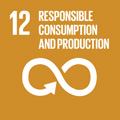- Docente: Giovanni Mazzanti
- Credits: 6
- SSD: ING-IND/33
- Language: English
- Teaching Mode: In-person learning (entirely or partially)
- Campus: Bologna
- Corso: Second cycle degree programme (LM) in Electrical Energy Engineering (cod. 9066)
Learning outcomes
To provide a deeper insight into the technological and engineering solutions adopted in power systems in the presence of high voltage and high electric fields, and on the basics of insulation coordination and testing. At the end of the course students are able to understand how lightning and switching surges affect high voltage systems, and possess the knowledge of the main features of the devices used in the high voltage field: overhead and cable lines; insulators; surge arresters; switchgears; DC, AC and impulse high voltage sources; voltage dividers. Particular emphasis is put on High Voltage Direct Current (HVDC) transmission systems, both from the line and from the converter station viewpoint.
Course contents
In summary, the topics treated during the course are split in three parts:
Part A
- Lightning overvoltages (Chpt. 1)
- Surge arresters (Chpt. 2)
- Switching overvoltages (Chpt. 3)
- High voltage circuit breakers (Chpt. 4)
Part B
- Test facilities for high voltage direct current, HVDC (Chpt. 5)
- Test facilities for high voltage alternate current, HVAC (Chpt. 6)
- Test facilities for high voltage impulses (Chpt. 7)
- Insulation coordination (Chpt. 8)
Part C
- Fundamentals about HVDC transmission and main technological features of HVDC-HVAC converter stations (Chpt. 9)
- Main technological features of HVDC overhead and cable lines (Chpt. 10)
Readings/Bibliography
It is not necessary to purchase specific texts. Handouts taken from the lectures by the teacher and covering all topics treated during the course (see Course contents above) can be downloaded online from the course website in the Virtual Learning Environment (https://virtuale.unibo.it/course/view.php?id=25845). These Handouts also include technical and scientific references for gaining a deeper insight into the subject.
For further personal study by the interested student, the following textbooks are suggested:
- Pearmain, Gallagher, “High Voltage Engineering”, IEE Publ., 1982.
- F.H. Kreuger, “Industrial High Voltage”, Delft University Press, 1991.
- G. Mazzanti, M. Marzinotto, Extruded Cables for High Voltage Direct Current Transmission: Advances in Research and Development, IEEE Press Series on Power Engineering, Wiley, 2013, ISBN 978-1-118-09666-6 (http://eu.wiley.com/WileyCDA/WileyTitle/productCd-1118096665.html)
Teaching methods
The course consists of 6 ECTS, corresponding to approximately 60 hours of lectures held in the classroom, and divided without interruption into:
- theoretical lessons;
- application exercises;
- seminars.
The objective of the application exercises is twofold:
- to provide practical indications on the application of the concepts learned in the theoretical lessons;
- to supply orders of magnitude typical of the various quantities of engineering interest in high voltage systems.
The objective of seminars, held by professional experts, is twofold:
- to deepen particular theoretical topics from a practical point of view;
- to provide more direct contacts with application and working realities.
Assessment methods
Oral examination: two questions chosen by the teacher, the first on part A of the course, the second on part B or part C of the course
Teaching tools
Handouts taken from the lectures by the teacher can be downloaded online from the course website in the Virtual Learning Environment (https://virtuale.unibo.it/course/view.php?id=25845), which also include technical and scientific references for gaining a deeper insight into the subject. Username and password are reserved for students enrolled in the course. It is advisable to print these Handouts and take them to class.
The lessons are based on slides in PDF and Powerpoint, with more detailed explanations on the blackboard; in the online mode, a graphic tablet will be used instead of the blackboard. Classroom exercises are based on the Mathcad software.
Office hours
See the website of Giovanni Mazzanti
SDGs




This teaching activity contributes to the achievement of the Sustainable Development Goals of the UN 2030 Agenda.
